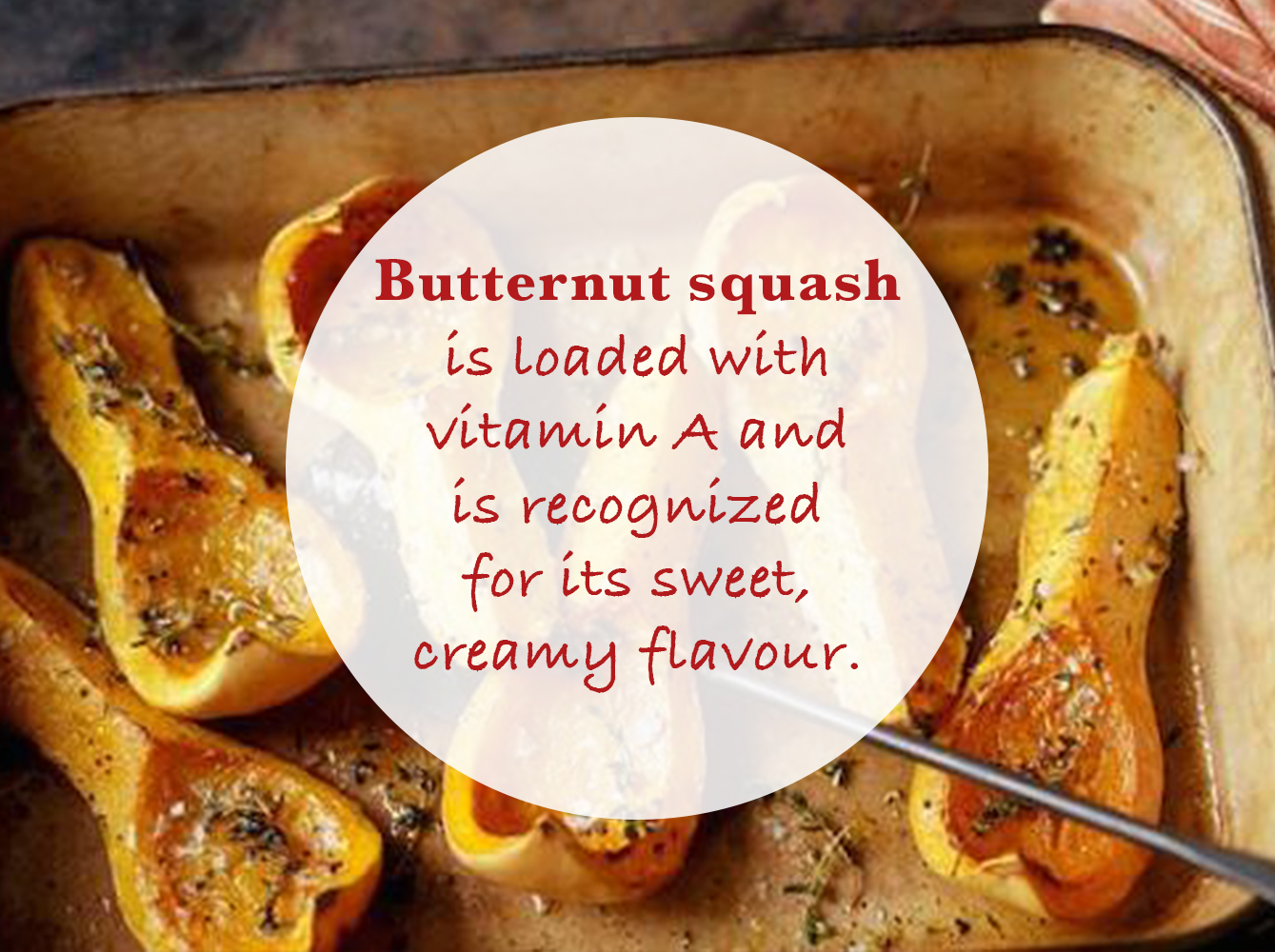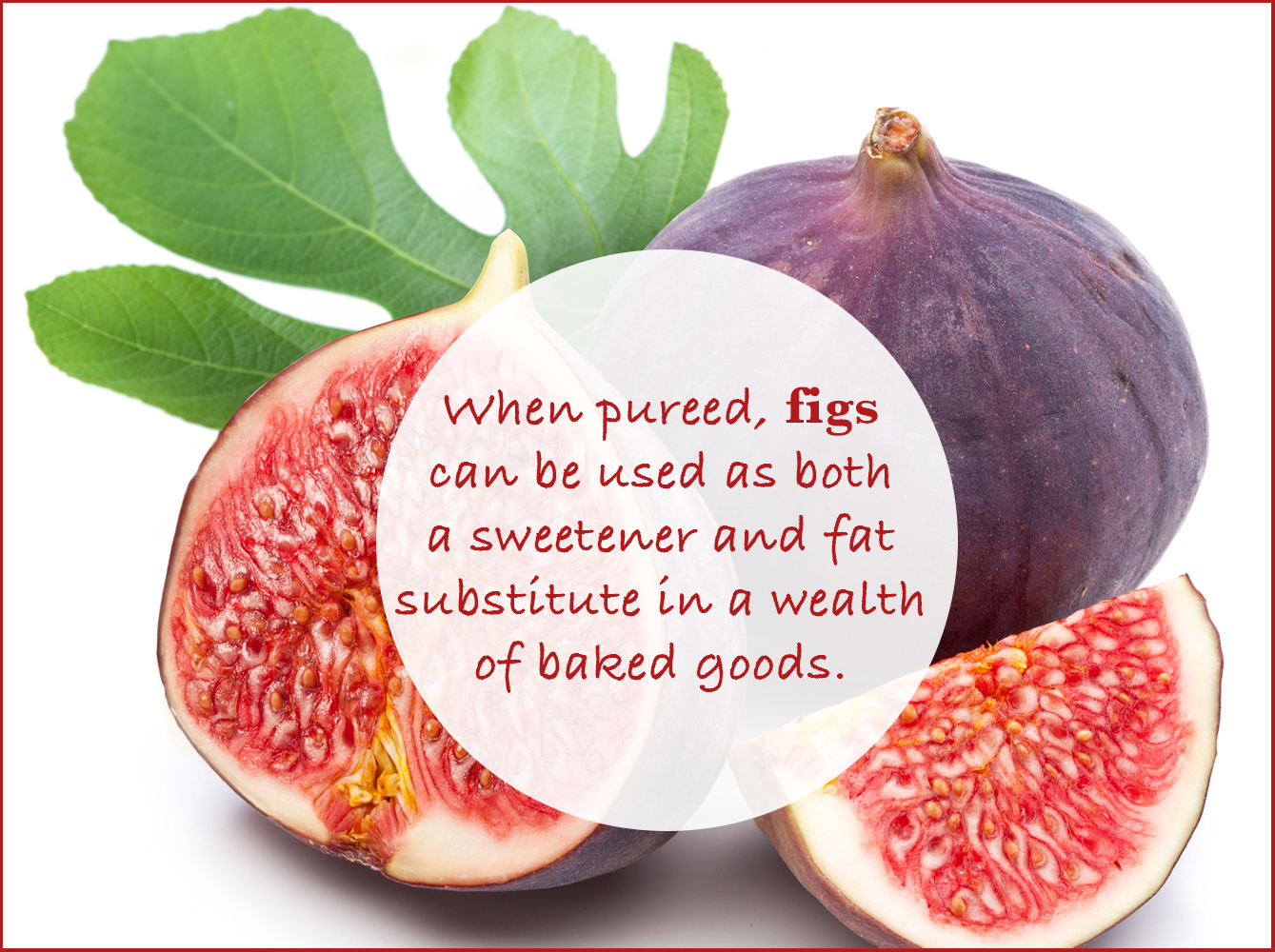It’s no surprise that at different times of the year, certain seasonal foods are at their best. As we leave the days of summer and its sumptuous foods behind us, it’s time to look towards a new season, and thankfully, autumn’s glorious food offering is every bit as tantalizing. Autumn boasts a wealth of fruit and vegetables which are rich in disease-fighting phytochemicals and so here, we take a look at 10 foods to fall for this autumn.
Parsnips
While these root veggies might look similar to carrots, they offer a delicately sweet flavour, and so perfect for those with sweet tooth cravings (and great for kids too!). Although they contain less vitamin A than carrots, they make up for this in their wealth of fibre, vitamin C, calcium and iron. Their versatility means they can be steamed, boiled, roasted or sautéed and in most recipes, they can replace carrots, potatoes or sweet potatoes. Autumn is the perfect time for making pots of soup and parsnips will add a lovely sweetness, pairing perfectly with other vegetables.
Sweet potatoes
Sweet potatoes are having a real moment in the foodie world and it isn’t surprising why. You will be forgiven for thinking they’re part of the potato family, when in fact they are a storage root, rather than tubers. Rich in beta-carotene, (vitamin A), each serving contains four times the recommended daily allowance. In fact, they’re so rich that in comparison, you’d have to eat 23 portions of broccoli to consume the same quantity of vitamin A! As a low glycemic food, sweet potatoes are highly recommended for diabetics as they slowly release carbohydrates which helps maintain steady blood sugar levels. Again, they can easily be baked, grilled or steamed and can easily replace potatoes in recipes.
Pumpkins
More than simply just a Halloween decoration, pumpkins are mighty in their antioxidant properties, as well as beta-carotene, vitamin C and folate. Pumpkins are delicious chopped and oven baked as the perfect side dish or serve as a delicious ingredient in a warming soup. Don’t forget to use their seeds too! These are a fantastic source of protein, zinc and omega-3 fatty acids. Roast in a hot oven for approximately 45 minutes and keep them handy as a perfect snack throughout the day.
Cranberries
A ripe autumnal berry, cranberries are low in fat and play a key role in reducing the risk of urinary tract infections, gum disease, ulcers, heart disease and cancer. They also boast anthocyanins, a healthy heart antioxidant. A small percentage of their crop is sold fresh each autumn, with the rest produced as juice, dried or as cranberry sauce. A little tart, they complement other fruits such as apples and pears perfectly, and make a welcome addition to baked delicacies, such muffins.
Butternut squash
Butternut squash is loaded with vitamin A and is recognized for its sweet, creamy flavour. With a dry flesh, it is best steamed or baked, while its firm texture makes it ideal for a curry. Peeling squash can be a bit of a chore, so we say… don’t do it! Simply leave the skin on, chop and bake it in the over to enjoy its delicious goodness.
 Turnips
Turnips
Turnips, or swedes, as commonly known in Ireland and Scotland, are cruciferous vegetables, shown to protect against cancer. They have a white flesh and tough outer skin that ranges from yellow to purple and are more bitter than potatoes. Turnips work particularly well boiled, mashed or roasted and can be easily incorporated into recipes where you’d normally use potatoes. They’re a great source of vitamin C and fibre.
Apples
Although enjoyed all year round, apples are at at their best during the autumn months. Rich in flavonoids, a potent antioxidant, studies have shown that enjoying a diet rich in these can lower the risk of heart disease, heart attacks and some cancers. Their versatility means they can be eaten both uncooked and baked, serving as a featured ingredient in many recipes.
Pears
High in fibre, and just as versatile as apples, pears can be enjoyed baked, poached or raw and eaten as part of a healthy diet, helping to reduce blood cholesterol levels. Why not try them served in low-fat pancakes, as a guilt-free treat?!
Clementines
Clementines or mandarin oranges are bitter orange hybrids. Rich in vitamin C, they’re great for keeping skin healthy, particularly during the colder months when it can become dry. Seedless and with loose skin, clementines are a great snack for those on-the-go days. They also make for a great addition to chicken dishes for a tropical twist!
Figs
Don’t neglect the fig! With more fibre content than any other dried or fresh fruit and an excellent non-dairy source of calcium, figs are a welcome addition to any diet. When pureed, they can be used as both a sweetener and fat substitute in a wealth of baked goods.
If you are unsure of how to change your eating habits, or need help optimising the foods you eat please do contact us. We would love to help you or your family and friends with any nutrition related queries big or small.
In the meantime do please check out our 121Dietitian Shop
If you have enjoyed this blog we would love you to share this with your family and friends on your social media channels.
Why not visit our YouTube Channel for more on keeping your health optimal.
How can a Dietitian help
- Book a consultation via our Online Portal
- About Gillian Killiner
- Check out our tailored dietary programmes
Gillian x
 Kristen McBurney2023-03-21I cannot recommend Gillian enough. I got in touch after struggling to lose weight due to PCOS and suffering from IBS. Thanks to Gillian, my IBS symptoms have massively reduced, and I have been able to lose a significant amount of weight. Her warmth makes you feel instantly comfortable and at ease. Gillian’s help and expertise is second to none, and she is always on hand to answer any questions. I am throughly enjoying the plan Gillian created for me and have found it easy to integrate into my everyday life. I am so grateful for the positive impact her plan has had on me.
Kristen McBurney2023-03-21I cannot recommend Gillian enough. I got in touch after struggling to lose weight due to PCOS and suffering from IBS. Thanks to Gillian, my IBS symptoms have massively reduced, and I have been able to lose a significant amount of weight. Her warmth makes you feel instantly comfortable and at ease. Gillian’s help and expertise is second to none, and she is always on hand to answer any questions. I am throughly enjoying the plan Gillian created for me and have found it easy to integrate into my everyday life. I am so grateful for the positive impact her plan has had on me. Hannah Crothers2023-02-10Gillian is the greatest. She is compassionate and professional, really helped me to understand my body’s function and how to best support it. Her advice has changed my life.
Hannah Crothers2023-02-10Gillian is the greatest. She is compassionate and professional, really helped me to understand my body’s function and how to best support it. Her advice has changed my life. Jay Rafferty2023-02-09I would highly recommend Gillian. Her advice and guidance has been a game changer for me. With so much conflicting and confusing advice on healthy eating, using a professional nutritionalist is a must.
Jay Rafferty2023-02-09I would highly recommend Gillian. Her advice and guidance has been a game changer for me. With so much conflicting and confusing advice on healthy eating, using a professional nutritionalist is a must. Emma Lavery2022-12-29I could not recommend Gillian enough over the last 3 months - she has turned my life around! I was referred to Gillian by my gastro consultant due to suffering from ibs, gastritis and hormonal issues for nearly 10 years. Gillian was very understanding and approachable throughout my time spent with her. Gillian discussed my health, lifestyle and eating habits thoroughly. She advised an individualised blood check for underlying issues, educated me on supplements and provided numerous information to help aid my recovery. The low foodmap programme I have been following is achievable and can be adapted to anyones lifestyle. As I am a vegetarian I thought this process may be difficult however Gillian reassured me that this would be no issue. She supplied personalised shopping lists, recipes and alternative foods to help heal my gut and overall health. Continual support from Gillian was on hand via email when required. I seen improvements in my symptoms within only weeks of starting the programme and was overwhelmed by the success due to suffering for years! I have been spreading the word about Gillian's brilliant work and will continue to do so! Thank you again for all your help!
Emma Lavery2022-12-29I could not recommend Gillian enough over the last 3 months - she has turned my life around! I was referred to Gillian by my gastro consultant due to suffering from ibs, gastritis and hormonal issues for nearly 10 years. Gillian was very understanding and approachable throughout my time spent with her. Gillian discussed my health, lifestyle and eating habits thoroughly. She advised an individualised blood check for underlying issues, educated me on supplements and provided numerous information to help aid my recovery. The low foodmap programme I have been following is achievable and can be adapted to anyones lifestyle. As I am a vegetarian I thought this process may be difficult however Gillian reassured me that this would be no issue. She supplied personalised shopping lists, recipes and alternative foods to help heal my gut and overall health. Continual support from Gillian was on hand via email when required. I seen improvements in my symptoms within only weeks of starting the programme and was overwhelmed by the success due to suffering for years! I have been spreading the word about Gillian's brilliant work and will continue to do so! Thank you again for all your help! mick lorkins2022-12-18Strongly recommended. There are not many professionals that can totally change you life for the better but this one one if you follow the advice given.
mick lorkins2022-12-18Strongly recommended. There are not many professionals that can totally change you life for the better but this one one if you follow the advice given. Bobby D2022-09-07For 30 years I have suffered with IBS D and have been unable to find the right specific help. I was introduced to 121 Dietician about 6 weeks ago and like all other services out there I was sceptical. First up was a consultation online which was great considering the many issues I was having going to places. Gillian listened very attentively and understood the many problems I was having. Gillian decided to introduce me to the Low FODMAP diet. Starting out she provided everything (information, shopping lists, recipes etc) to get started. Through the course of the first 6 weeks Gillian was available to answer any questions or concerns. Following the first 6 weeks I'm very happy to say that all the many problems associated with IBS have gone and I'm starting to live a normal life without any stage fright when out and about. The next 8 weeks will be the reintroduction stage but based on the knowledge from Gillian in the initial stage I'm very confident that at the end I will have full understanding of all my triggers. I can't recommend this service enough as most importantly after 30 years of severe symptoms I once again feel healthy and happy. This is a must if you suffer continually from this horrendous condition. I would be confident that this will help anyone who has IBS. For me this was the best money ever spent and I can't thank Gillian enough for the difference she has made. Roy Dornan
Bobby D2022-09-07For 30 years I have suffered with IBS D and have been unable to find the right specific help. I was introduced to 121 Dietician about 6 weeks ago and like all other services out there I was sceptical. First up was a consultation online which was great considering the many issues I was having going to places. Gillian listened very attentively and understood the many problems I was having. Gillian decided to introduce me to the Low FODMAP diet. Starting out she provided everything (information, shopping lists, recipes etc) to get started. Through the course of the first 6 weeks Gillian was available to answer any questions or concerns. Following the first 6 weeks I'm very happy to say that all the many problems associated with IBS have gone and I'm starting to live a normal life without any stage fright when out and about. The next 8 weeks will be the reintroduction stage but based on the knowledge from Gillian in the initial stage I'm very confident that at the end I will have full understanding of all my triggers. I can't recommend this service enough as most importantly after 30 years of severe symptoms I once again feel healthy and happy. This is a must if you suffer continually from this horrendous condition. I would be confident that this will help anyone who has IBS. For me this was the best money ever spent and I can't thank Gillian enough for the difference she has made. Roy Dornan Jack Kennedy2022-09-04Helped solve stomach issues, had previous been to several people but this was the first dietary intervention that worked
Jack Kennedy2022-09-04Helped solve stomach issues, had previous been to several people but this was the first dietary intervention that worked Laura Campbell2022-04-29After over 10 years of eating quite poorly, Gillian has completely changed my approach to food. After a consultation and review of my diet, she provided me with a list of easy and quick recipes that are packed full of nutrition. She takes into consideration your lifestyle as well which I really appreciated too. I now have much more energy and actually enjoy preparing meals now, something I never did before. I honestly cannot recommend her enough. Thankyou! :-)
Laura Campbell2022-04-29After over 10 years of eating quite poorly, Gillian has completely changed my approach to food. After a consultation and review of my diet, she provided me with a list of easy and quick recipes that are packed full of nutrition. She takes into consideration your lifestyle as well which I really appreciated too. I now have much more energy and actually enjoy preparing meals now, something I never did before. I honestly cannot recommend her enough. Thankyou! :-) Chris Arnold2022-04-24The overall experience was a very positive one. Gillian certainly had the expertise and people skills to help evaluate and treat my daughters gut issues. The progress was quite instantaneous and over time has made a huge difference to her everyday life. Thanks to Gillian for her work which came at the end of many doctor consultations. In hindsight Gillian should have been the first port of call.
Chris Arnold2022-04-24The overall experience was a very positive one. Gillian certainly had the expertise and people skills to help evaluate and treat my daughters gut issues. The progress was quite instantaneous and over time has made a huge difference to her everyday life. Thanks to Gillian for her work which came at the end of many doctor consultations. In hindsight Gillian should have been the first port of call. Amelia Tyler2022-03-30Gillian is great and her program was just perfect. All the meals were delicious and I always felt satisfied which made it very easy to follow. I would highly recommend, especially the 121 sports program.
Amelia Tyler2022-03-30Gillian is great and her program was just perfect. All the meals were delicious and I always felt satisfied which made it very easy to follow. I would highly recommend, especially the 121 sports program.
[instagram-feed]
Information checked & correct on 16th May 2018.
Links included in this description might be Amazon affiliate links. If you purchase a product or service with the links that I provide I may receive a small commission.






 Turnips
Turnips


